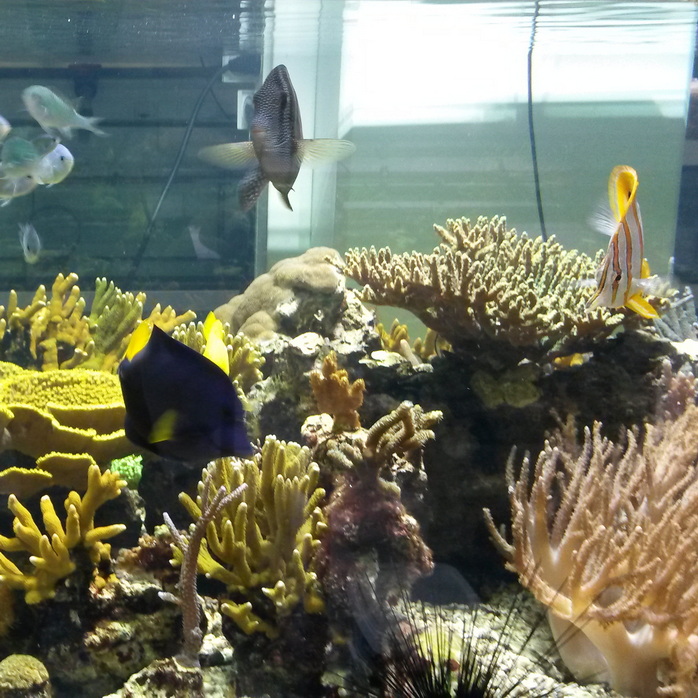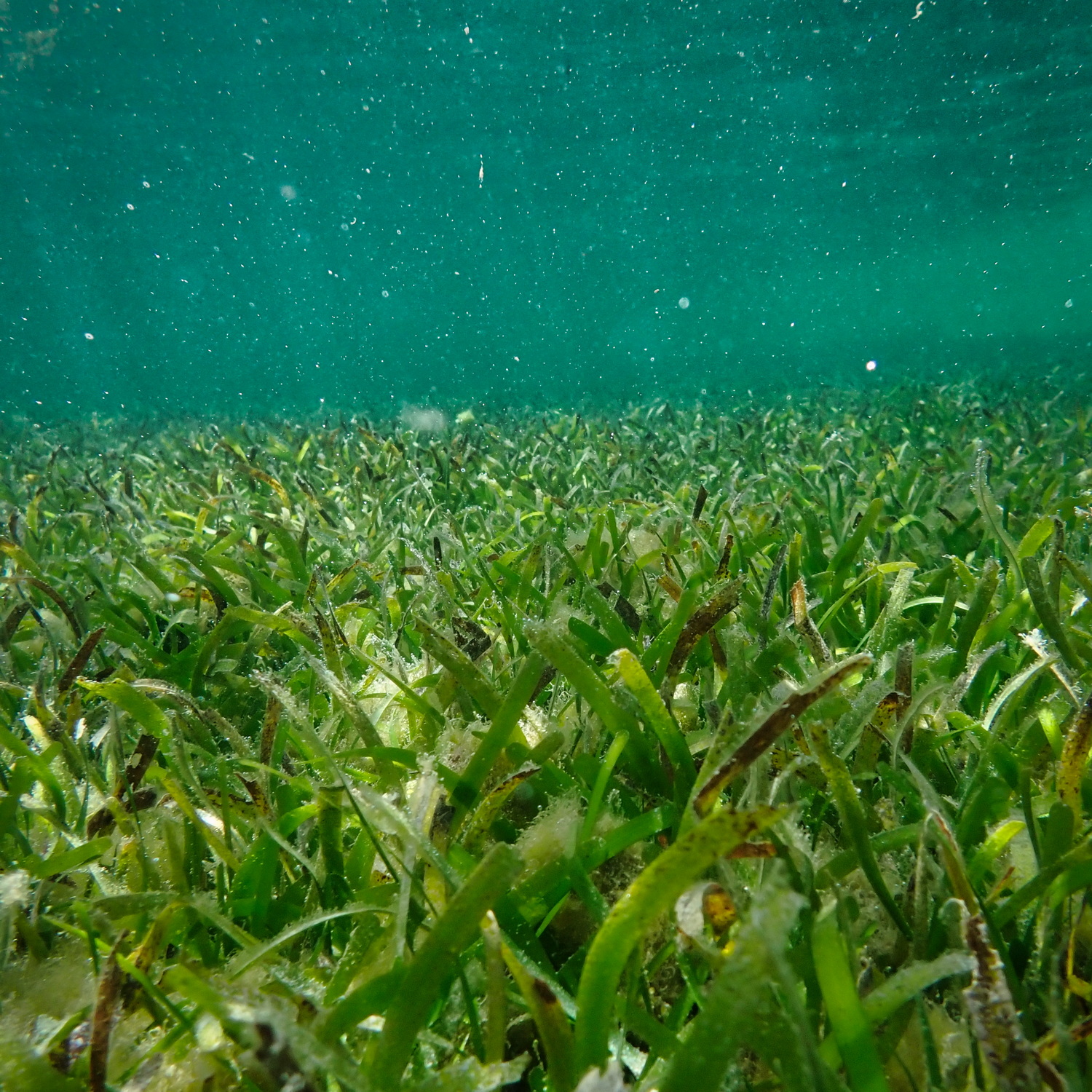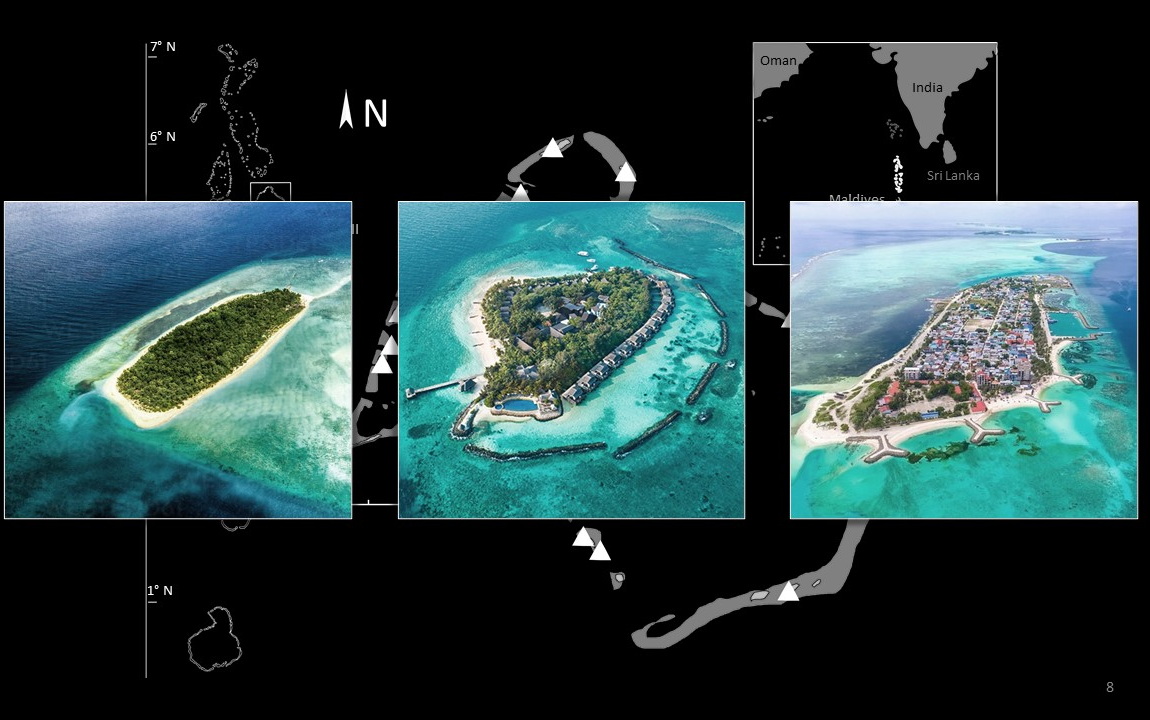Coral reef ecology

Climate change, together with other anthropogenic and biotic influences, is expected to cause dramatic changes in the structure of coral reef communities.
At the Chair of Animal Ecology I, individual aspects of coral reef ecology are investigated. On the one hand, field studies are conducted, on the other hand, the seawater aquarium with numerous experimental tanks offers ideal research conditions.
Current projects

Effects of island development on seagrass-associated macroinvertebrate communities in tropical seagrass ecosystems.
Seagrass beds are increasingly threatened by coastal development and urbanization, especially in small island developing countries. Associated disturbances are either chemical or physical. Physical disturbances such as boat traffic and tourist activities reduce seagrass bed cover. A major source of chemical pollution in small island developing states is open burning of urban waste, which contributes a wide range of pollutants to surrounding waters. Polycyclic aromatic hydrocarbons (PAHs), which make up a large proportion of these pollutants, pose a significant risk to marine organisms through sublethal to lethal effects.
In addition to direct negative effects on seagrass, chemical and physical disturbances also potentially affect the biodiversity of seagrass-associated faunal communities. Because a diverse seagrass-associated epifaunal community ensures seagrass ecosystem function and resilience, it is of great importance to understand how the aforementioned anthropogenic disturbances affect the seagrass epifaunal community.

This doctoral project was worked on by Stephan Hamisch.
The project was financed by the German Academic Scholarship Foundation with the support of "Naifaru Juvenile” and the “Atoll Marine Centre Naifaru”.
Completed projects

Atoll islands as ecosystem replicates - Organization of biodiversity and environmental impact of different human land uses
By studying small islands, which are either used for tourism or by the local population, different forms of anthropogenic stressors can be analyzed spatially separated and the respective impacts on the system can be compared. Furthermore, disturbances can be analyzed on the ecosystem level, since the processes and interactions taking place on small islands are less complex.
Thus, the different forms of anthropogenic disturbance can be analyzed to determine whether they have different ecological impacts on tropical coastal ecosystems.

It is investigated whether different forms of anthropogenic disturbances have a different influence on (I) the physical parameters of the habitat and the distribution of organisms, (II) the food web of the system and (III) the resource availability and thus competition between individual species.

This doctoral project was worked on by Dr. Sebastian Steibl.
The project was financed by the German Academic Scholarship Foundation with the support of "Naifaru Juvenile” and the “Atoll Marine Centre Naifaru”.
Publications (selection)
- Steibl, S. & Laforsch, C. (2021)
Compartmentalized organization of ecological niche occupation in insular invertebrate communities. Ecology and Evolution 11(1): 471-480. https://doi.org/10.1002/ece3.7067 - Steibl, S. & Laforsch, C. (2020)
Shell resource partitioning as a mechanism of coexistence in two co-occurring terrestrial hermit crab species.
BMC Ecology 20(1): 1. https://doi.org/10.1186/s12898-019-0268-2 - Steibl, S., et al. (2021)
Allochthonous resources are less important for faunal communities on highly productive, small tropical islands.
Ecology and Evolution 11(19): 13128-13138. https://doi.org/10.1002/ece3.8035 - Steibl, S., Franke, J., Laforsch, C. (2021)
Tourism and urban development as drivers for invertebrate diversity loss on tropical islands.
Royal Society Open Science 8(10): 210411. https://doi.org/10.1098/rsos.210411 - Steibl, S. & Laforsch, C. (2019)
Disentangling the environmental impact of different human disturbances: a case study on islands.
Scientific Reports 9(1): 13712. https://doi.org/10.1038/s41598-019-49555-6 - more publications under: Dr. Sebastian Steibl
© Dr. H. Imhof
Acanthaster plancii
Increased outbreaks of Acanthaster plancii (crown-of-thorns starfish) have devastating effects on the fragile coral reef ecosystem, as Acanthaster is a predator of stony corals. However, the causes of this mass occurrence are not yet fully understood.
The enormous morphological plasticity of Acanthaster in combination with the migratory behaviour of these organisms could explain how these organisms can reach a new reef patch over long distances without having to feed.
In laboratory and field studies, the morphological plasticity will be analysed non-invasively using magnetic resonance imaging and subsequent 3D reconstruction. The project will not only provide new insights into the life cycle and plasticity of Acanthaster, but will also help to develop management strategies to protect the fragile reef ecosystem.
This PhD project is being carried out by Dipl.-Biol. Robert Sigl
Publications (selection)
- Sigl, R., Imhof, H., Settles, M., Laforsch, C. (2013)
A novel, non-invasive and in vivo approach to determine morphometric data in starfish.
Journal of Experimental Marine Biology and Ecology 449: 1-9. https://doi.org/10.1016/j.jembe.2013.08.002 - Sigl, R. & Laforsch, C. (2016)
The Influence of Water Currents on Movement Patterns on Sand in the Crown-of-Thorns Seastar (Acanthaster cf. solaris).
Diversity 8(4). https://doi.org/10.3390/d8040025 - Sigl, R., Steibl, S., Laforsch, C. (2016)
The role of vision for navigation in the crown-of-thorns seastar, Acanthaster planci.
Scientific Reports 6(1): 30834. https://doi.org/10.1038/srep30834 - more publications under: Dipl.-Biol. Robert Sigl

